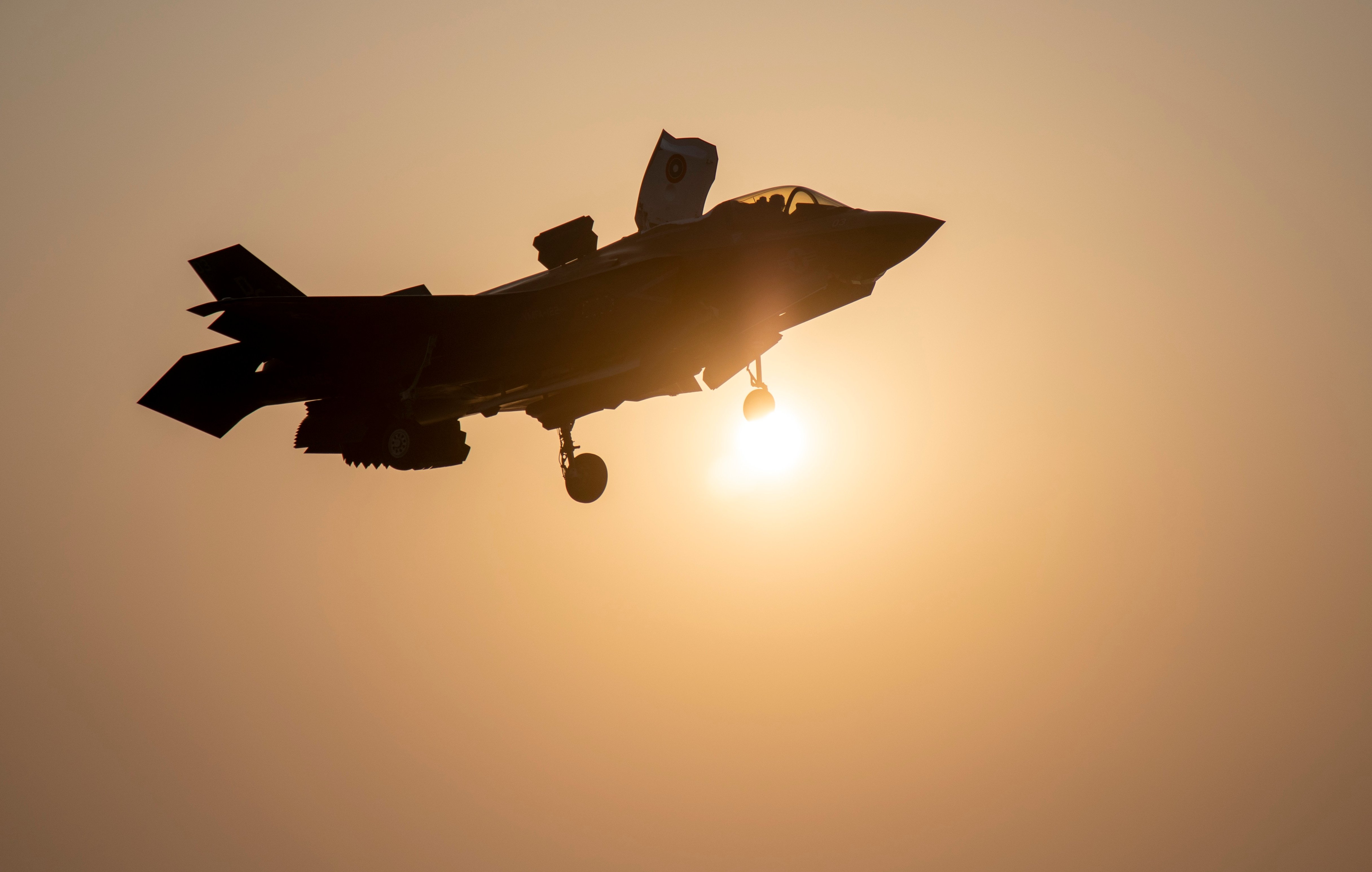
The 13th Marine Expeditionary Unit’s recently-completed deployment across the Pacific started out with the Marine Corps’ first operational deployment of a full squadron of F-35B Lightning II Joint Strike Fighters and closed out with a sinking of an old warship during an exercise in the South China Sea.
“We had a wildly successful deployment,” Col. Samuel Meyer, the 13th MEU’s commander, said in a media call last week.
Meyer spoke during a break in Washington, D.C., while making rounds highlighting the accomplishments of “The Fighting 13th” with Marine Corps and other military officials, as is the practice for MEU commanders after an overseas deployment.
The Camp Pendleton, Calif.-based unit deployed across the Pacific sailing aboard amphibious assault ship USS Makin Island (LHD-8) and amphibious transport docks USS Anchorage (LPD-23) and USS John P. Murtha (LPD-26) from San Diego, Calif., on Nov. 8, 2022. Its missions were to be the crisis-response force wherever it deployed and to deter aggression and reassure allies, Meyer said.
The scheduled 2022-2023 deployment was notable for the amount of time the ARG/MEU spent in Western Pacific – 208 days, according to the MEU. And 176 of those days were spent training and integrating with other U.S. and allied forces in eight countries and partnering with another four allied military forces in multi-national exercises. The 13th MEU returned home in early June.
“We stayed in INDOPACOM the entire time,” Meyer said. “We didn’t necessarily expect to do that but certainly were ready to do that.”
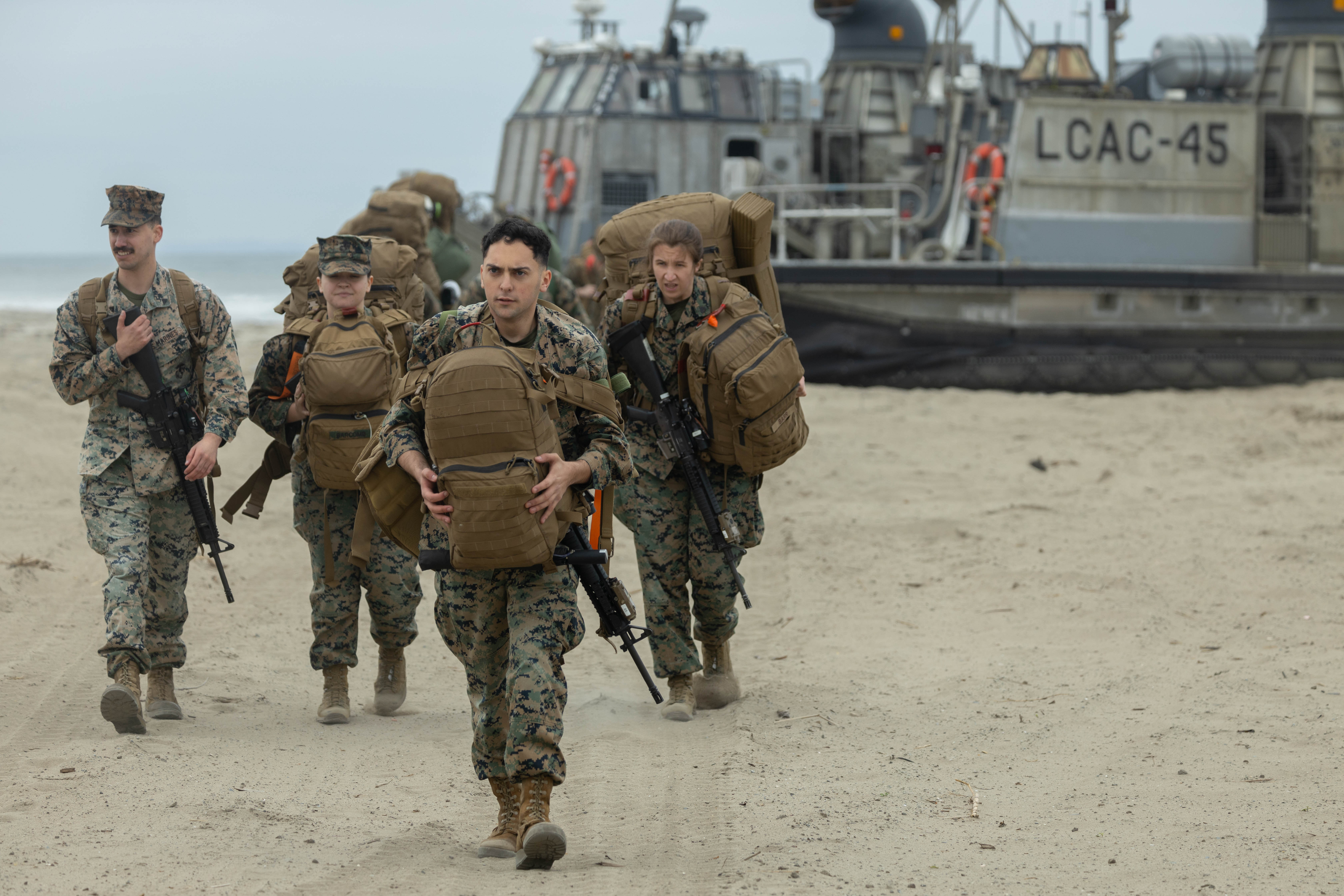
The 13th MEU last trekked on ships overseas during its 2018-2019 deployment to the western Pacific. This time, it got quickly to work in late November 2022, joining with its Indonesian KOMAR counterparts during a Cooperation Afloat Readiness Training (CARAT) in Indonesia and the Java Sea. Later, the MEU joined in the SINKEX mission to target and sink a World War II-era ship off Zambales working with U.S. and Filipino forces in littoral live-fire drills during Exercise Balikatan 2023 in the Philippines. Lots of eyes were watching, including Philippine President Ferdinand Marcos, Jr.
“There were multiple, multiple agencies firing at the ship, but ultimately, the ship was sunk by fifth-generation F-35B aircraft dropping ordnance on it, and we sank it in about 20 seconds,” Meyer said.
“I would say we demonstrated not only our resolve to support our allies but also our capability,” he said. “It was very rewarding to know that the ARG/MEU was successful in the accomplishment of that mission and that their president was watching.”
During Expeditionary Strike Force operations in the South China Sea in March, aircraft carrier USS Nimitz (CVN-68) supported the ARG/MEU for periods of time, Meyer said.
“The ARG/MEU also ran the air defense, not only for itself but the carrier strike group for a period of 48 hours,” he said. “Those things showed Navy-Marine Corps integration in an area where we care about, in a time where we care about, based on the highest tasks within the national defense strategy.”
“We were able to show a persistence presence in the South China Sea and in the first island chain, and also inside the 9-Dash Line,” Meyer said. “We did not go around it; we went deliberately through it.”
The MEU had trained “to respond to any type of incursion,” he added, including working with a carrier strike group.”
“All or any interactions that we had with anyone in international waters was safe and professional,” he said. “No unsafe, unprofessional interactions. We were simply sailing in international waters, where we had to be and they have a right to be. So in no time were there any unsafe, unprofessional interactions with anyone during the time we were there.”
Future Concepts in Play
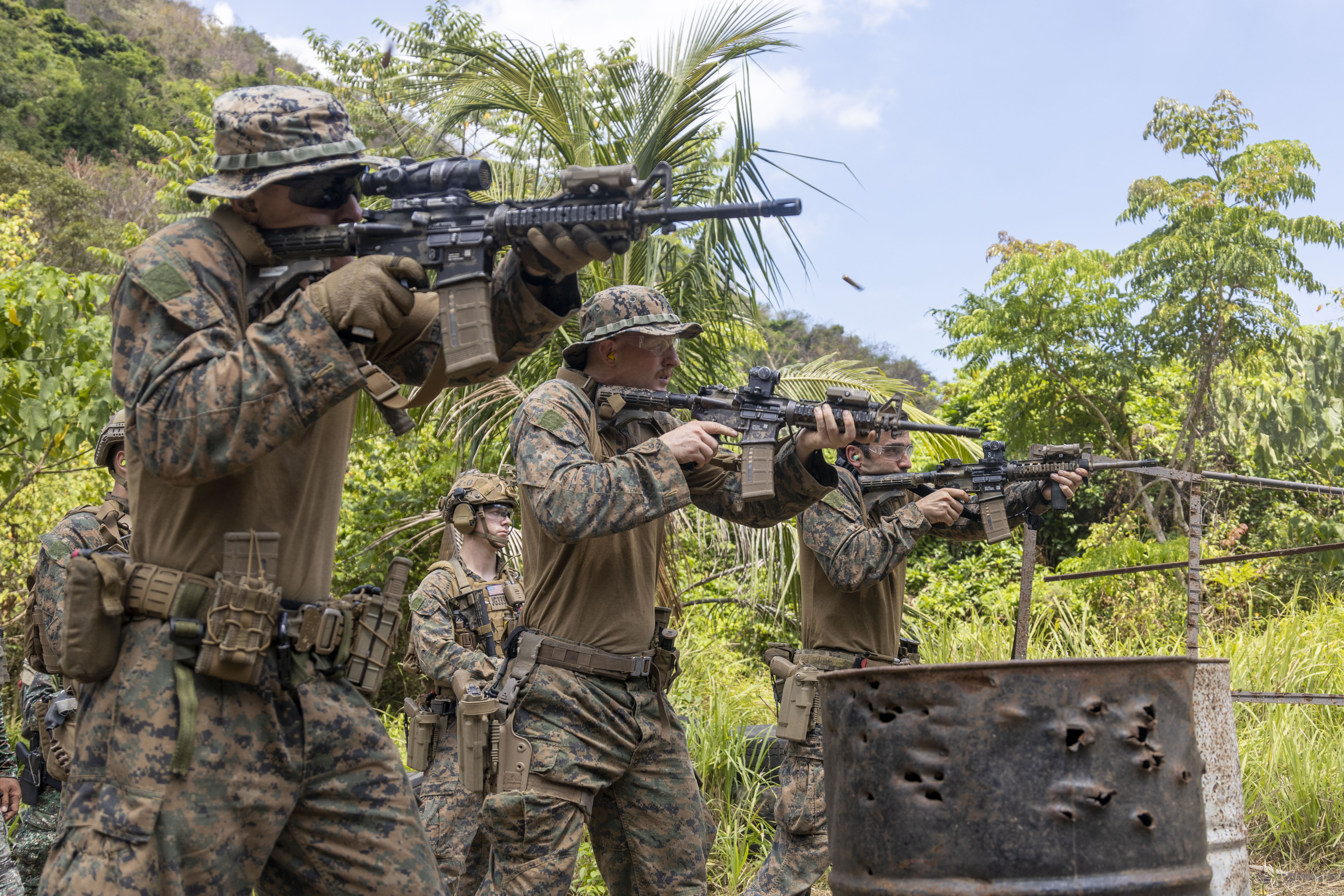
While it looked ahead to scheduled exercises with allies and remained prepared in case the 9-1-1 call came, the 13th MEU also had Force Design 2030 on its mind. During the deployment, as it did during its six-month pre-deployment workups, the 13th MEU put some of the Marine Corps’ future concepts to the test. One of these is Sensing Expeditionary Advanced Bases.
Sensing EABs are mobile, low-signature elements that deploy near key maritime terrain, using concealment and assets such as aerial drones or teams on small boats with sensors like radar, that can detect and target enemy forces, according to the Marine Corps. These critical nodes become part of the wider, larger kill chain. It’s all about expanding maritime domain awareness, using high-tech sensors and other systems to open the aperture for commanders’ situational awareness and enable amphibious forces to operate far away and closer to the fight, including within an enemy force’s weapons engagement zone.
The 13th MEU deployed and demonstrated its Sensing EAB capabilities several times during the 2022-2023 deployment, including its operations with the Nimitz CSG in March in the South China Sea and during bilateral exercise Balikatan 2023 in the Philippines in April.
“It’s one of our offerings to Force Design,” Meyer said. “I can do all of those things today… We’re are showing that we can do Force Design today with the Sensing EAB.”
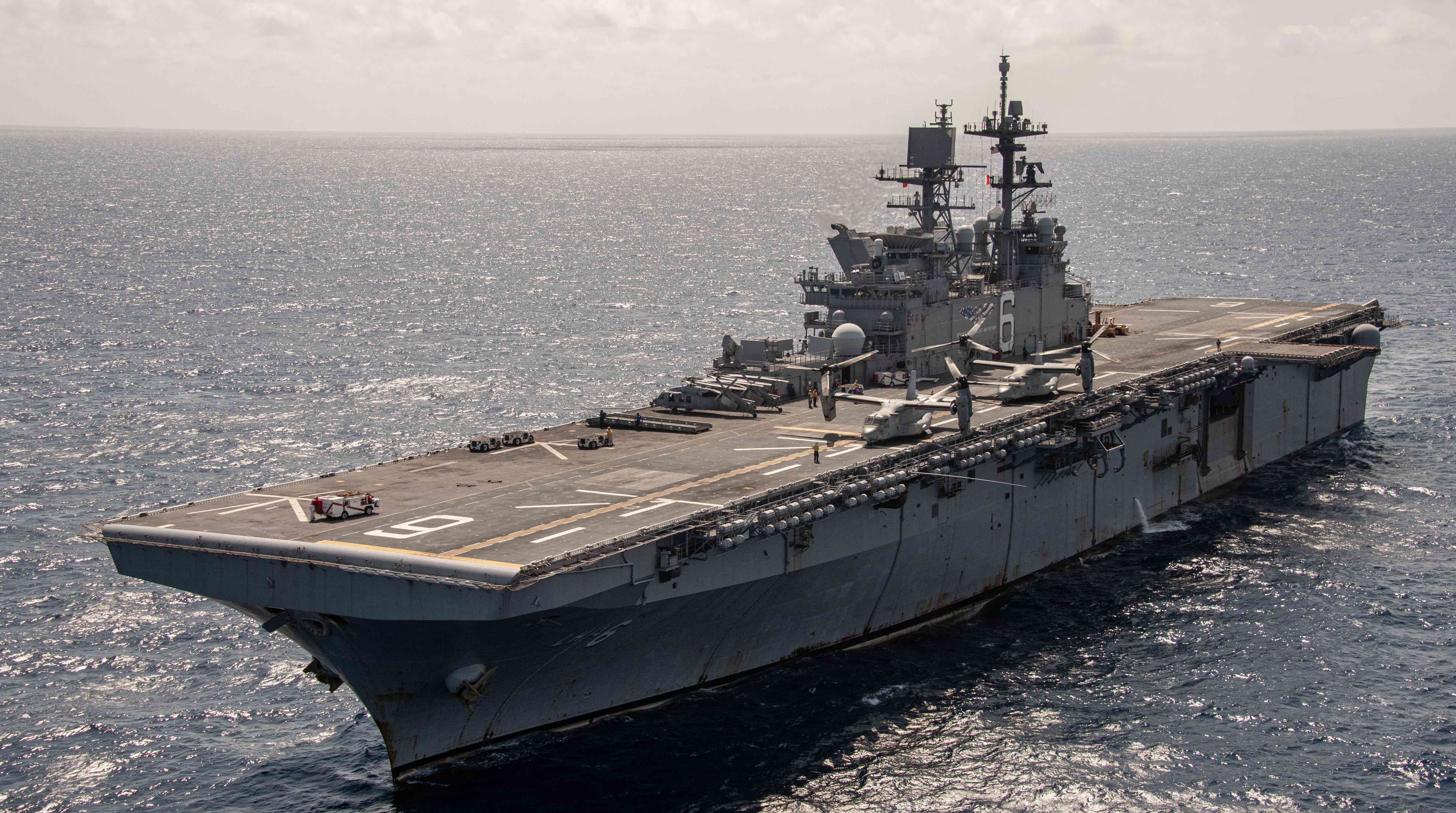
The 13th MEU employed its SIMRAD radar system, a small, mobile sensor, throughout the deployment including during operations in the South China Sea, an area heavily contested and challenged by China and its People’s Liberation Army naval forces. “We experimented with that capability all the time,” not just in the South China Sea, Meyer said, in places and during times where they had permission, including during TSC events and CARAT bilateral exercises.
“You deploy 20 to 30 Marines with a communications-node capability, and then deploy various sensors like a radar or a drone (the V-Bat unmanned aerial system) with surveillance capability, and also rigid-hull inflatable boats with sensing capability, and use those assets to provide input to the (command-and-control) node on the island,” he said. “That C2 node could take those feeds, whether they are from the RHIB or from the radar or from the UAS, and integrate them into the common operating picture aboard the ship.”
“I could do that with F-35s,” he added. “I can do that with (MV-22B) Ospreys and CH-53s that are equipped with digital interoperability kits, and I can pipe that feed into the ship’s systems.”
The MEU transmitted all that data to U.S. and allied ships, Meyer said.
“The sensing EAB is a low-cost, low-signature capability where I can put eyes and ears out in… terrain of interest and then feed that back to not only Navy ships – that may be an amphib or an aircraft carrier – but also our partners and allies, and doing that while reducing risk to the ship because the ship does not have to be there,” he said.
Air, Supply Support
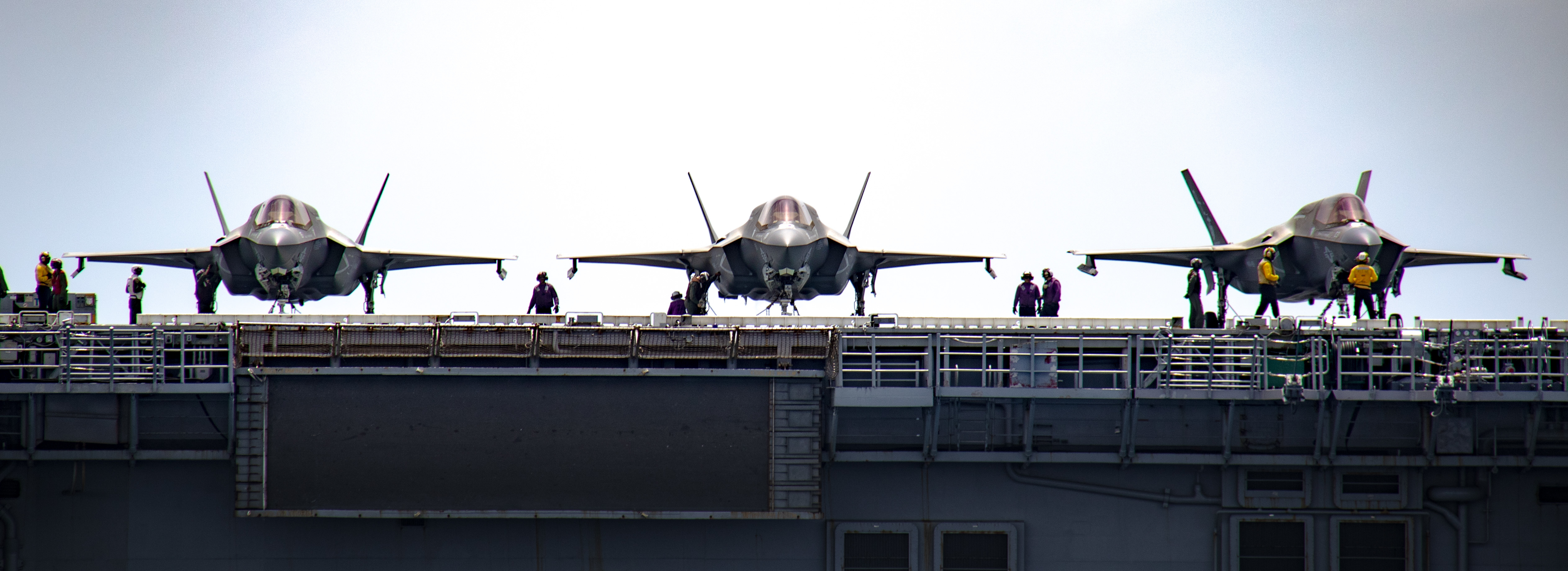
The 2,500-member 13th MEU is the first to deploy a full, 10-plane squadron of fifth-generation F-35Bs “and maintained a high state of readiness the entire deployment,” Meyer said, crediting much of that readiness to the support from each ship. It also had a full squadron of Osprey tiltrotors during its deployment.
“The Indo-Pacific is a vast area, and supply chains are not as I’ll say as robust or as habitual as in” the U.S. Central Command region, Meyer said.
Both the big-deck USS Makin Island (LHD-8) and two LPD-class ships, whose hangar space and flight deck are larger than the smaller LSD-class ships, accommodated the F-35Bs seamlessly and allowed the ARG/MEU to do flight and well-deck operations simultaneously on all three ships, Meyer said.
“I simply had more space, so I had more options for configuration,” he said.
The 13th MEU and Makin Island ARG spent a long stretch in the region, and that meant more time at sea and more support required from different ports and harbors in countries that hadn’t seen many U.S. maritime units since the COVID pandemic began. In some cases, he said, the ARG/MEU lacked reliable husbanding support due to continuing repercussions from the investigation into Leonard “Fat Leonard” Francis and his company Glenn Defense Marine Asia.
Francis “provided a lot of husbanding, logistics support, and when that structure went away, it just left a hole,” Meyer said. “Between that and COVID, there were some surprises there.” The L-class ships “allowed us to absorb that when those capabilities weren’t there.”
“Those things were challenges that we did not expect to encounter,” he added. But with support from the ARG’s ships to ensure aircraft and forces remained ready, “we were able to overcome a lot of the logistical and supply challenges that we encountered.”
The MEU took on extra parts and supplies they expected its aviation crew to need, factoring those into each ship’s load-out plan, he said, “and where we didn’t have a part, we were able to find a part,” he said. “It proved to be very successful. It did not come without challenges. Planning and working together with the Navy was key to that.”
“We had to reenergize those supply chains,” he said, but “nothing affected our capability, writ large.”
Renewing Relationships
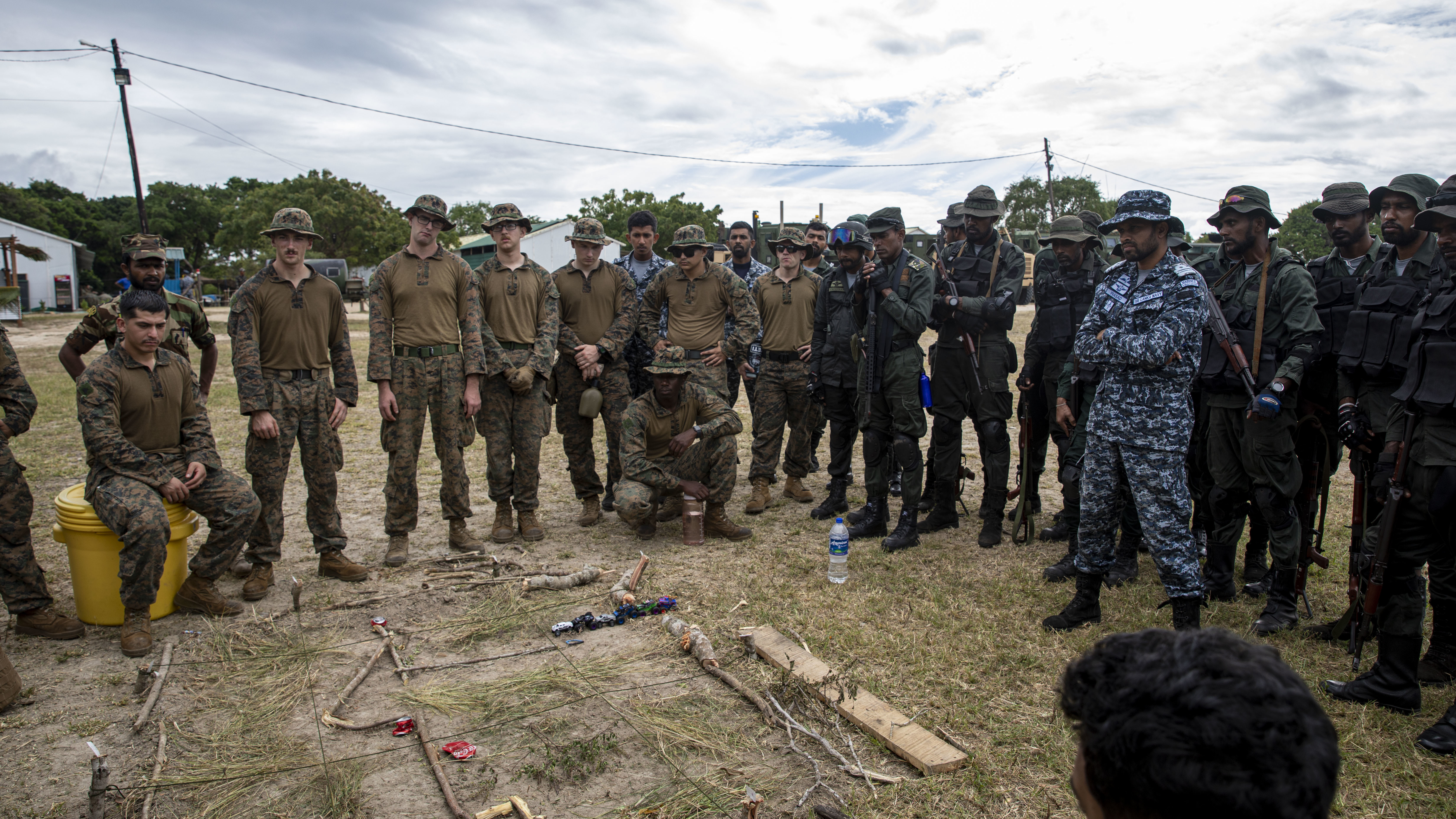
Part of the problem may have stemmed from the pandemic-driven disruption of regular deployments of U.S. Navy ships to some regional ports and the halting due to COVID of some theater security cooperation events with allied militaries.
“Because it had not been done for so long, we were just learning what the logistical and supply chain environment was in a post-COVID world,” Meyer said. “It was frustrating at times. But the ship’s capability and our ability to flex and move with the ship was a force multiplier to allow us to absorb those unknown things.”
So when a local business that had provided fresh water was no longer around to supply the MEU, he said, “the ship still has its stores, and we have some time to figure that out.”
What Meyer found was less of a supply issue but more of the need for better coordination by all command levels – something that will be required to support and sustain an ARG/MEU in the future operational environment envisioned by Force Design 2030.
“How do you maintain and sustain an ARG/MEU that is campaigning there in the Indo-Pacific, based on the country’s expectations?” he said.
The MEU worked through the issues with the Navy, including Commander Task Force 76-3, the higher headquarters, he said.
“While there were frustrations; all of these engagements we had at any of these ports were wildly successful,” he said.
“Now we’ve got a playbook on how to do it,” he added, noting that an ARG/MEU deployment to the region “also demonstrates that we’re serious about coming to these countries.”
Overall, the 13th MEU “got all the resources that we needed. But it wasn’t as easy as everyone thought it would be,” Meyer said, adding “we are trying to re-establish the routine, so we don’t surprise anybody.”





